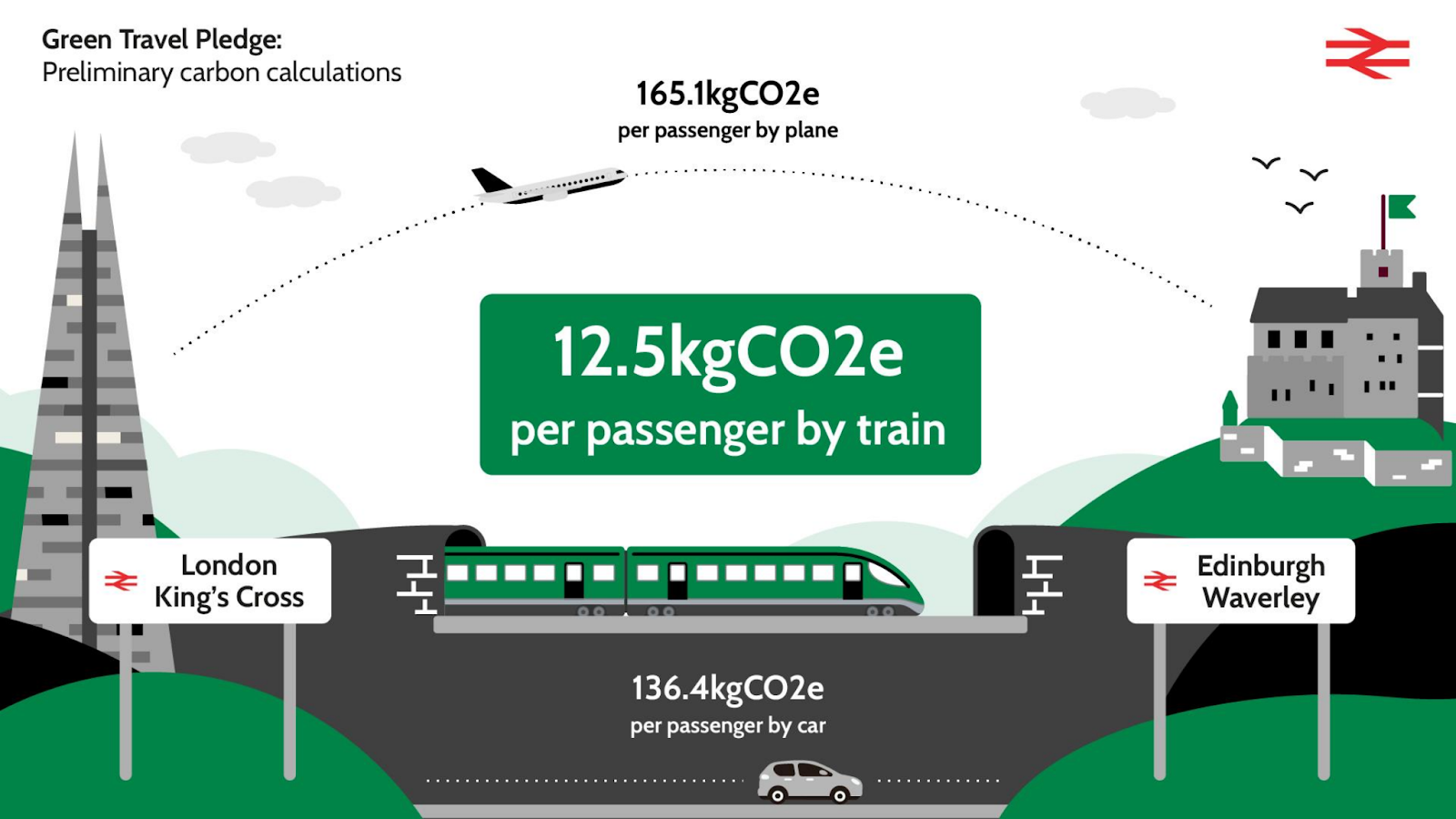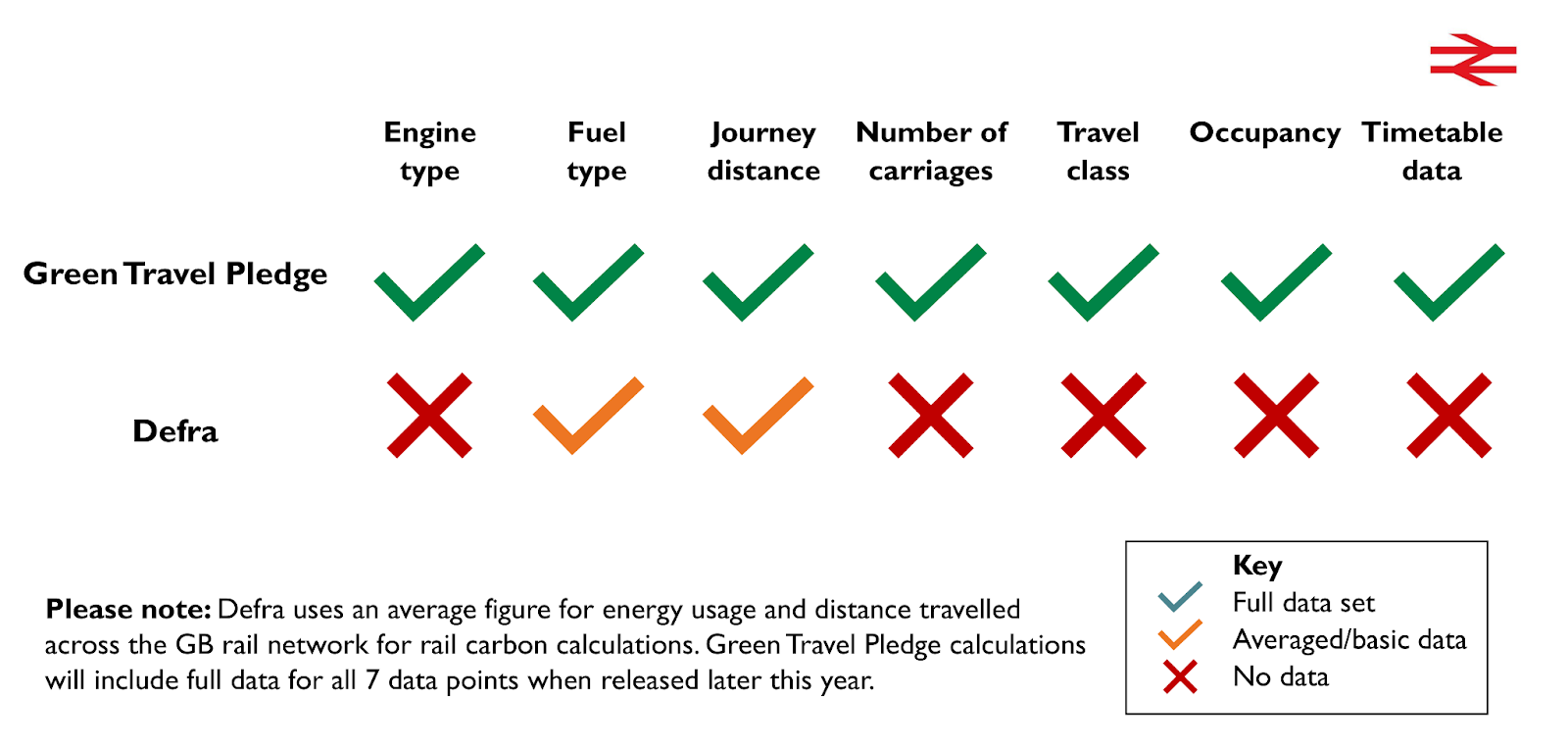Businesses rely on good data to make the right travel decisions
65% of Global Business Travel Association (GBTA) members agree that quantifying carbon emissions reduction opportunities is the most challenging aspect of addressing sustainability. As we work to enhance the data that goes into reporting carbon emissions, net zero goals become more achievable. This couldn’t be more true for Great Britain’s rail industry, where the methodology we’ve built with the Rail Delivery Group, Great British Railways Transition Team, and Fabrik, is showing that rail travel creates 10 times less carbon emissions per passenger than the equivalent car journey and 13 times less than travelling by plane.
As businesses become increasingly conscious of their environmental impact, they are beginning to explore ways to make business travel more sustainable. When data accuracy improves, travel choices become clearer.
Introducing the Green Travel Pledge rail carbon calculator
As experts in sustainability intelligence, Thrust Carbon was chosen to collaborate with the Rail Delivery Group, data partners Fabrik and the wider rail industry to develop a new methodology for calculating rail journey emissions with accurate and reliable data. The work is part of the rail industry’s Green Travel Pledge, which is a commitment to empower business travellers to make more informed choices on environmentally-friendly travel modes.
The Green Travel Pledge rail carbon calculator offers a detailed, route-specific estimation that takes into account the intricacies and diversity of rail operations. This advanced perspective combines seven rail data sets which have never before been utilised together to measure the carbon footprint of rail travel.
The rail carbon calculator reports emissions based on energy consumption metrics specific to different engine types, actual travel distance (including the literal twists and turns of the rail route, rather than a straight distance between start and end points), carriage count, class type, and crucially, passenger load.
Advancing the foundation of Defra
Although the UK Government's Greenhouse Gas Conversion Factors for Company Reporting, developed by Defra, has served as a valuable framework for measuring rail transport, the Defra methodology relies on dividing the total energy consumed by the UK rail network by the total distance travelled. This approach results in a generalised average emissions factor. While this methodology was a pioneering step in rail emissions accounting, it inherently fails to capture the nuanced variations across different rail routes, engine types, and passenger loads.
Recognising this limitation, we have collaborated with our partners to take it a step further. Our methodology elevates emissions estimation to the highest level of precision.
The preliminary results
We’re proud to release the preliminary results for journeys on the electrified rail route from London King’s Cross to Edinburgh Waverley Station.
The table below shows the increased accuracy of our methodology compared to the Defra average for the specific route from London King’s Cross to Edinburgh Waverley:
Route | Mode of Transport | Methodology | Emissions per Passenger (KGCO2e) |
London to Edinburgh | Rail | Thrust Carbon | 12.5 |
London to Edinburgh | Rail | DEFRA | 24.0 |
London to Edinburgh | Plane | DEFRA | 165.1 |
London to Edinburgh | Car | DEFRA | 136.4 |

